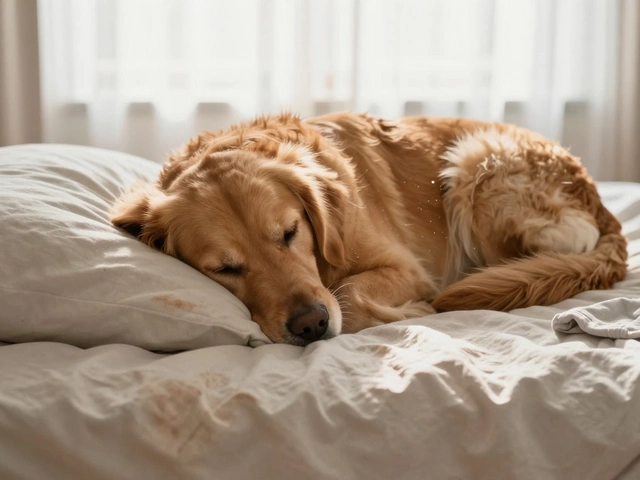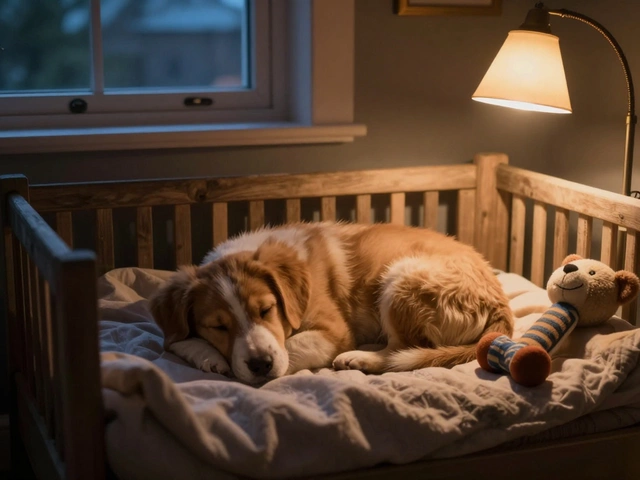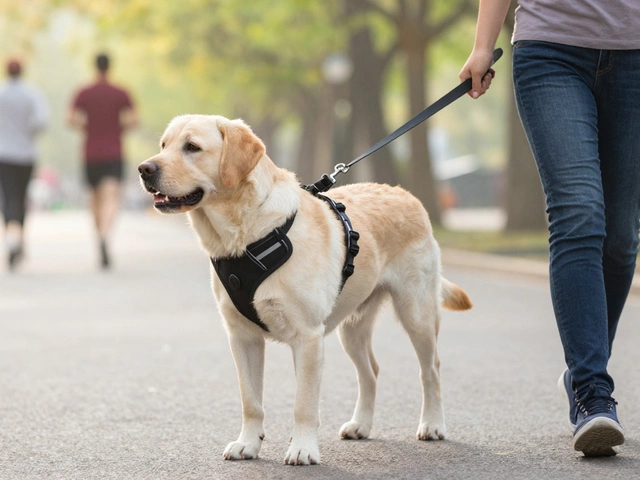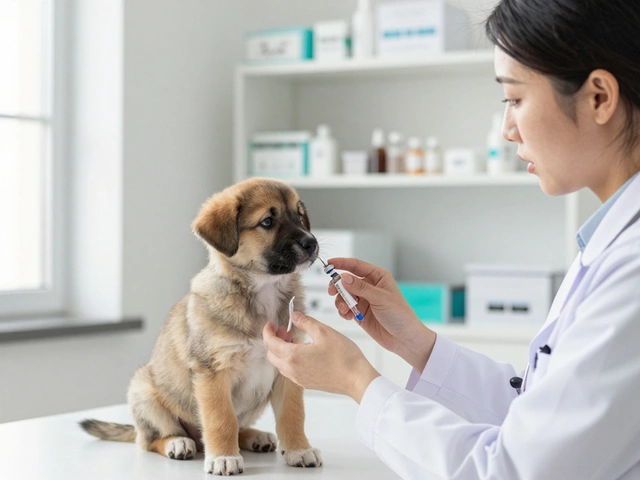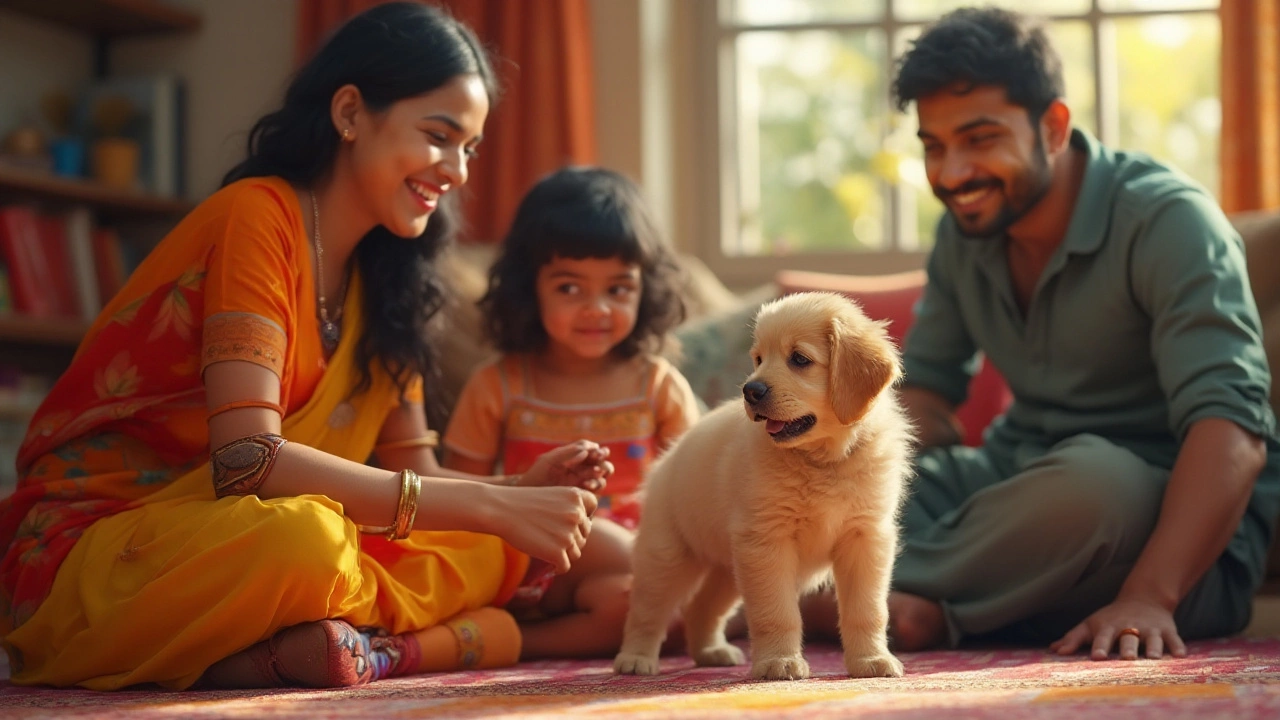
Potty training a puppy is an essential and sometimes challenging part of being a pet owner. When your furry friend leaves a wet surprise on your living room floor, it can be difficult to know the best way to respond without causing stress for either of you. There's a fine line between teaching your puppy effectively and creating unnecessary anxiety. Thankfully, with a combination of patience and the right approach, you can guide your puppy toward the appropriate behaviors and help them learn where to do their business.
Understanding your puppy's behavior and incorporating positive reinforcement can shape the training process in a healthy and constructive way. It's not about punishment; it's about teaching and encouraging. In this article, we'll explore practical steps to help manage and reduce those indoor accidents. We'll also highlight useful tools and toys that can enhance the process, ultimately making house-training a more enjoyable experience for you and your puppy.
- Understanding Puppy Behavior
- Positive Reinforcement Techniques
- Common Mistakes to Avoid
- Choosing the Right Puppy Toys for Training
Understanding Puppy Behavior
At the heart of every successful house-training journey lies a deep comprehension of your puppy's behavior. Recognizing the innate traits and instincts of your furry companion can significantly facilitate the training process. Puppies, much like babies, come into the world with a natural set of instincts. They rely heavily on these instincts to interact with their environment and comprehend their new world. A crucial point to note is that puppies are not inherently aware of household etiquette such as the rule over where they should or shouldn't eliminate. This is a skill they learn gradually, akin to learning how to walk or fetch.
A common trait among puppies is their limited bladder control, which greatly affects their house-training experience. Most puppies aren't capable of holding their bladder for much longer than one hour for each month of age they have. It's not unusual for a two-month-old puppy to need to relieve itself every two to three hours. This means that patience and consistency become key elements in your training routine. Establishing a schedule that coincides with your puppy’s needs and routine is essential. Paying attention to specific cues like circling or sniffing can also provide insights into when your puppy might need to go.
Puppy behaviorist and vet Dr. Sophia Yin once pointed out, “Early socialization and positive training are what set the stage for a confident and friendly dog.”
Understanding these cues, and responding promptly, will match your puppy's natural instincts, making the training smoother. However, learning isn’t just about timing. Understanding how your puppy perceives rewards and consequences is equally vital. Puppies thrive on positive reinforcement – they will repeat behaviors they associate with positive outcomes. Incorporating this knowledge into daily interactions means celebrating successes with treats or affection, thereby reinforcing good behavior. On the contrary, raising your voice or responding harshly can intimidate a puppy, inducing confusion rather than clarity in your training efforts.
Puppies also interact with their environment through playful exploration. This is why having the right puppy toys matters a great deal in training. Toys not only help burn energy, but they can also serve as a form of positive reinforcement when correctly utilized. A puppy rewarded with a toy after a successful bathroom break outside is one likely to associate toys and outdoor elimination with positive experiences. This brings us to another crucial behavioral aspect – play is a powerful tool in training. Offering structured playtime can significantly influence their learning process, as it aligns with their instinctual behaviors.
Creating a nurturing setting that caters to your puppy’s natural instincts while gradually introducing rules establishes a foundation of trust and understanding. This approach not only improves house-training results but also strengthens the bond between you and your puppy. Remember, a successful house-training process is less about avoiding accidents, and more about understanding your puppy's behavior so well that you anticipate their needs and respond effectively. With observation, strategic reinforcement, and a little patience, you're well on your way to enjoying a clean home and an even happier puppy.
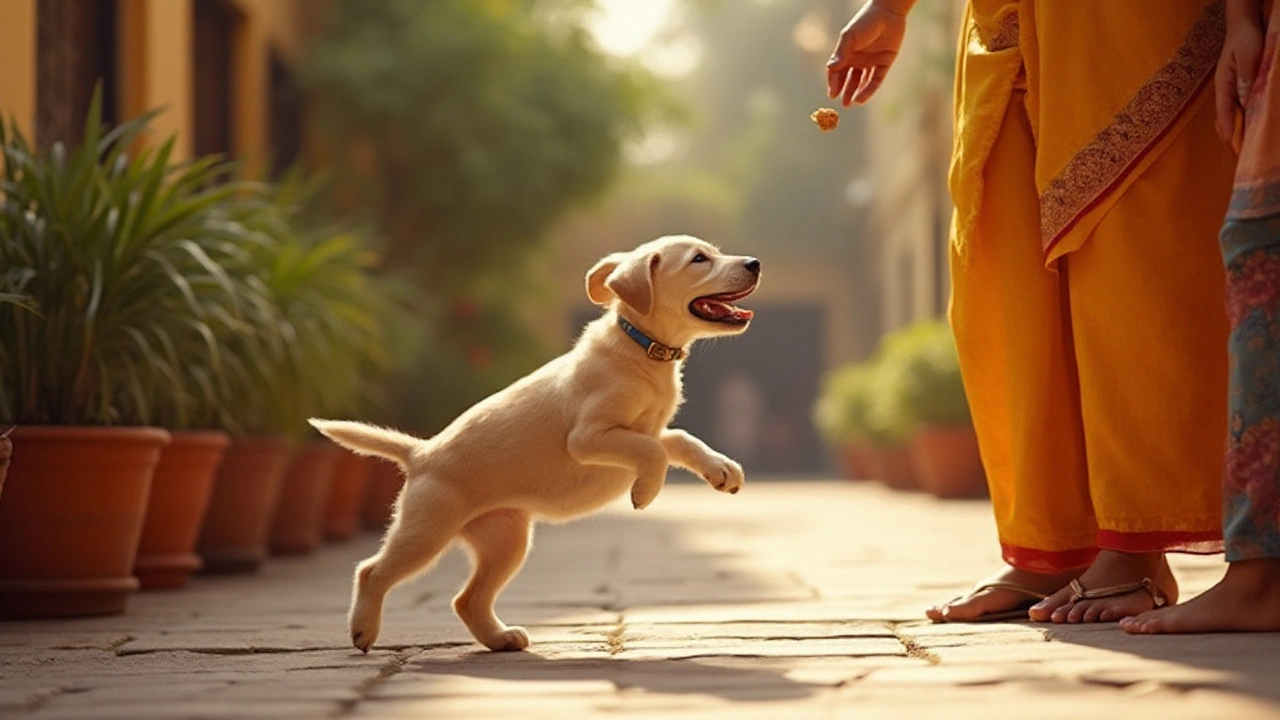
Positive Reinforcement Techniques
Positive reinforcement is a key element in effective puppy training and plays a significant role in establishing healthy behaviors. Instead of focusing on what your puppy is doing wrong, positive reinforcement encourages repetition of good behaviors by rewarding them with treats, praise, or play. This method not only creates a bond of trust between you and your puppy but also fosters a training environment filled with encouragement rather than fear. It's crucial to understand the timing of your reward, as this can greatly impact your puppy's learning. Rewarding immediately after the desired behavior is observed helps your puppy make the connection between the action and the reward.
One common approach to positive reinforcement is clicker training, where a small device makes a clicking sound whenever your puppy performs a desired action. This sound is immediately followed by a treat, creating an association between the click and positive feedback. Over time, your puppy learns to repeat the action upon hearing the click. According to animal behaviorists, dogs respond exceptionally well to this method because it provides consistency and clarity about which actions are being acknowledged. Utilizing clicker training can be particularly beneficial when teaching your puppy to eliminate outside instead of indoors.
"The best way to instill good habits in a dog is through positive reinforcement. Ignore the bad and reward the good," says a well-known dog trainer.
Of course, understanding what motivates your puppy is key. While some puppies respond well to food, others might be more motivated by attention and playtime. As you focus on house-training your puppy, observe what triggers excitement and eagerness. Tailor your rewards accordingly, ensuring that each training session remains constructive and enjoyable. Occasionally, varying the rewards keeps your puppy curious and engaged, preventing them from becoming conditioned to expect the same outcome every time.
It's essential to avoid common mistakes when implementing positive reinforcement. Consistency in commands and hand signals ensures clarity for your puppy. Mixed messages can lead to confusion, causing setbacks in the training process. Keep commands short and simple so the puppy understands what is expected. Remember, patience is pivotal—puppies are not born trained, and it takes time for them to adapt to new environments and rules. To help both you and your puppy stay on track, maintain a scheduled routine for feeding and potty breaks, reinforcing the behavior you wish to see.
Building a Reward System
Establishing an effective reward system is like creating a blueprint for success in house-training. Start by making a list of behaviors you want to encourage, mapping out what you consider acceptable. Decide on a hierarchy of rewards based on the behavior's difficulty. More challenging actions might deserve a high-value treat, while simpler tasks can be acknowledged with verbal praise or a quick petting session. Consistency is key; always use the same incentive for a specific action, reinforcing the connection between behavior and reward.
While creating this system, keep in mind the importance of gradual progression. Once you've conquered basic commands, introduce more complex tasks, slowly raising the level of difficulty. This dynamism not only keeps training interesting for your puppy but intellectually stimulating as well. As each new task is mastered, adjusted rewards ensure that training remains exciting. This multifaceted approach enhances the bond with your puppy, leading to a well-mannered companion who understands boundaries both inside and outside the home.
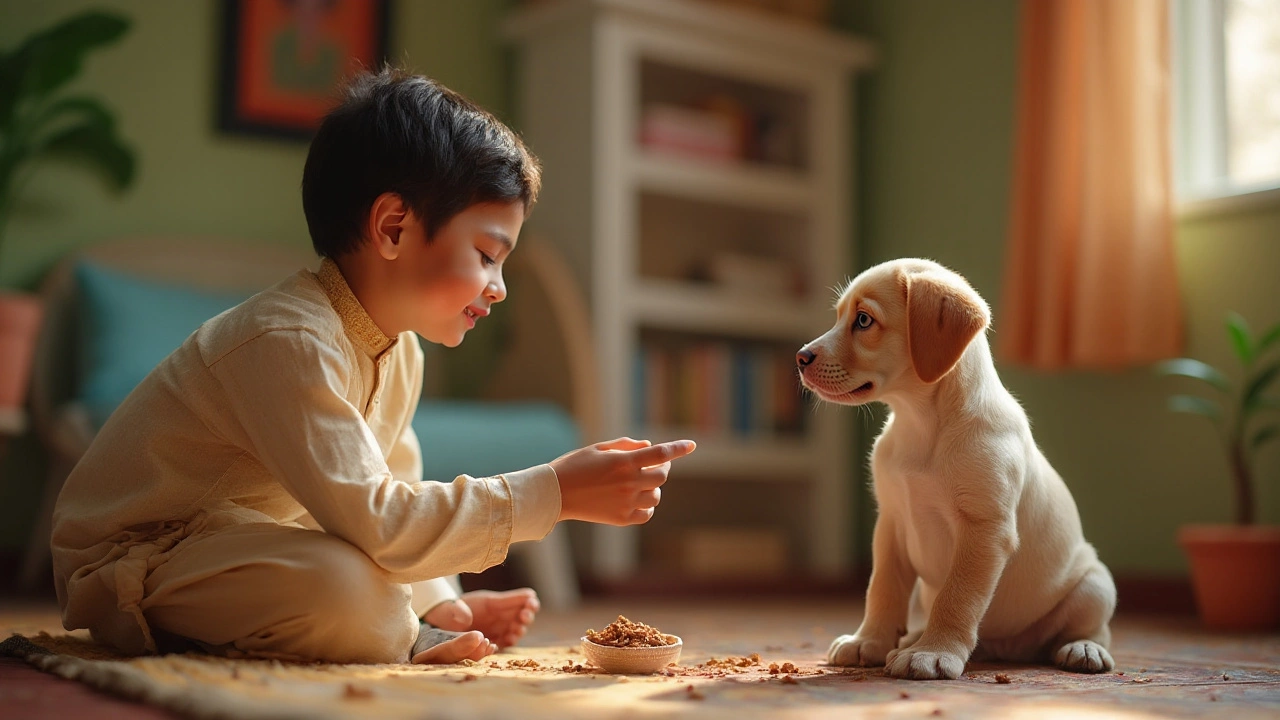
Common Mistakes to Avoid
When you're diving into the world of house-training your new puppy, it's very easy to unintentionally make some common errors that could slow down or even hinder the learning process. One of the most frequent mistakes is expecting too much too soon. Puppies, much like human infants, need time to learn and develop control over their bladder. Jumping to conclusions that they should know better can lead to frustration on your part and confusion for your puppy, which can damage the bond you're striving to build. It's crucial to remind yourself that puppy training is a journey, not a sprint.
Another often overlooked aspect is the inconsistency in your training methods. Puppies thrive on routine and predictability. If you're sometimes harsh and sometimes indifferent, your puppy will have trouble discerning what's expected. Set a clear, consistent routine for bathroom breaks and stick to it. In addition, ensure that all family members are on the same page when it comes to the rules and cues used during puppy training. Inconsistency between trainers can make the environment stressful and unclear for your puppy, leading to more indoor accidents.
A significant mistake is neglecting to pay attention to your puppy's body language and signals. Puppies might give subtle signs, like sniffing the ground or circling, indicating they need to relieve themselves. Ignoring these cues because you're distracted or not attuned to their behaviors leads to missed opportunities and more clean-up. By cultivating an observant attitude, you'll better anticipate when your puppy needs to head outside, minimizing indoor accidents and reinforcing the idea that outside is the place to go.
Disciplining your puppy harshly for accidents is another trap many pet owners fall into. Using negative reinforcement doesn't just brand your puppy's actions but can instill fear and anxiety. According to animal behaviorists, such tactics can be counterproductive. As noted by Brandon McMillan, a renowned trainer, "Fear-based training can break the trust between you and your pet, making future training even more difficult." It's far more beneficial to focus on positive reinforcement, celebrating those moments when your puppy gets it right, thereby building confidence and understanding.
Introducing your puppy to puppy toys can be an integral part of the training, yet many underestimate their value in delaying bathroom breaks or holding their attention when busy. Puppy toys can serve as a distraction in situations where you'd rather not find puddles later. Choosing the right kind of toys is essential – those that engage the puppy but aren't so absorbing that they forget about their need for a bathroom break are best. In essence, toys should complement your training efforts rather than complicate them. Puppy care involves balancing correction with nurturing, and mindful use of toys is a small yet significant part of it.
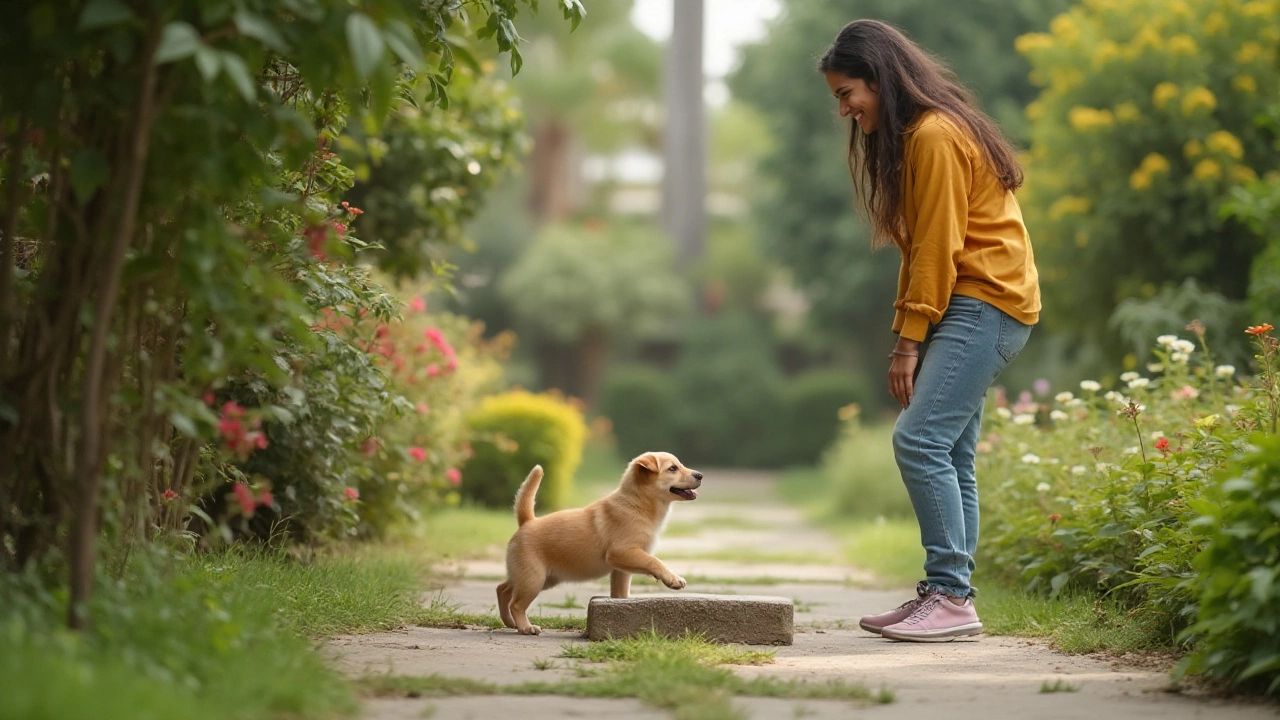
Choosing the Right Puppy Toys for Training
Puppy toys are more than just playthings. They are vital tools that can significantly aid in your puppy training mission. Selecting the right toys for your new companion is crucial because they play a dual role: providing mental stimulation and assisting in the house-training process. A well-chosen toy can keep your puppy engaged, prevent boredom, and even reduce the likelihood of indoor accidents. At the same time, toys can be strategic aids in training, offering rewards and distractions that support learning.
When choosing toys, consider those that are both sturdy and safe. Toys made from durable materials like hard rubber or resilient textiles are less likely to become shredded and swallowed by teething puppies. Safety is non-negotiable, so always look for toys that are labeled non-toxic and vet-approved. Puzzle toys, for example, are excellent choices because they challenge your puppy's mind. By hiding treats or kibble inside these toys, you not only keep their attention but also positively reinforce correct behaviors and timing. Squeaky toys can be enticing, but ensure they're supervised play since squeakers can be a choking hazard if removed.
Interactive toys that require your involvement can also be fantastic. Rope toys for tug-of-war, or fetch toys that you play with together, strengthen your bond and establish a partnership rooted in play. These moments are not just fun; they offer opportunities for reinforcing commands and obedience in a playful context. As an additional benefit, moving toys can replicate the sensation of hunting and chasing, making them particularly engaging for puppies who are naturally inclined toward these instinctual behaviors. The right toy can serve as an outlet for energy that might otherwise result in unwanted behaviors like peeing inside.
"Play is the highest form of research," Albert Einstein famously noted. And indeed, for puppies, play forms an essential part of learning about the world and how they are expected to behave within it.
Finally, incorporating toys into a reward system during training is smart. For instance, when your house-training puppy outdoors completes their business successfully, immediately rewarding them with a favorite toy can reinforce their good behavior. Calming toys, such as soft plushies with heartbeats or warming features, can comfort an anxious puppy and encourage relaxation, reducing stress-related accidents. By selecting diverse toys that cater to play, learning, and comfort, you're setting the stage for a happy, well-trained puppy who thrives both mentally and emotionally.

